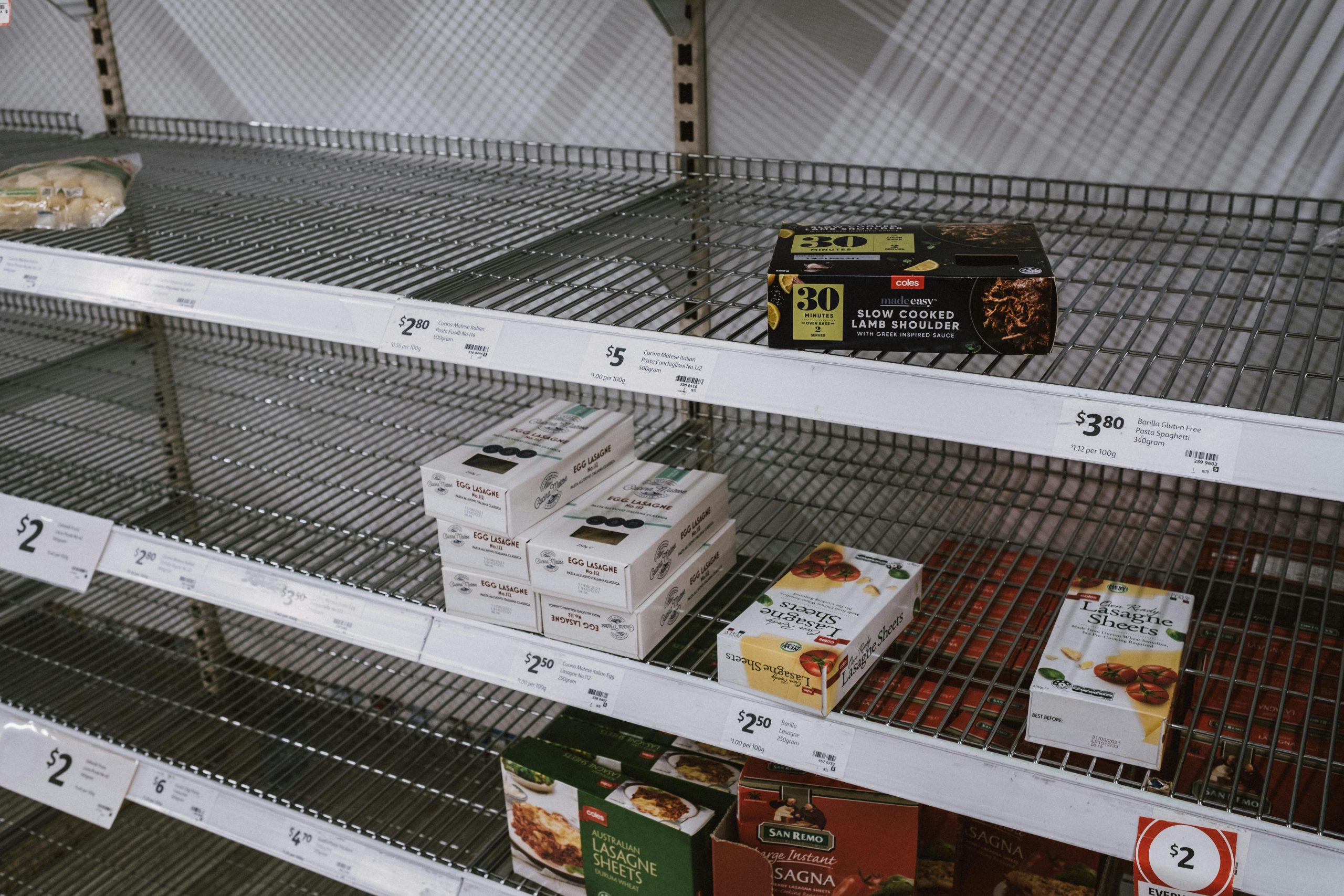Recent world events have taught us that supermarket shelves are not always guaranteed to be full. Supply chain disruptions, sudden surges in demand, or weather events can quickly lead to shortages of essential goods. While panic buying is never helpful, being thoughtfully prepared with a well-stocked pantry is a wise strategy. Understanding which items are most vulnerable to disappearing from shelves can help you create a practical home reserve. Here are 12 pantry items that have proven to be historically vulnerable to shortages, and why keeping a reasonable supply on hand is a smart idea.

1. Toilet Paper and Paper Towels
This was the most memorable shortage of the early pandemic. Bulky items like toilet paper have a low profit margin and take up a lot of space on trucks and in warehouses. This means supply chains run very lean, with just-in-time delivery. Any spike in demand, driven by panic or genuine need, can wipe out the available supply almost instantly, creating a feedback loop of scarcity.
2. Flour and Baking Yeast
During periods when people stay home more, there’s a surge in home baking. This creates a massive demand spike for flour and yeast. Mills and packaging plants are not equipped to suddenly double or triple their output. This leads to empty shelves for these baking staples, as many people discovered while trying to perfect their sourdough starters.
3. Canned Goods (Vegetables, Soups, Beans)
Canned goods are a cornerstone of any emergency pantry due to their long shelf life. During any period of uncertainty, they are among the first items to see increased demand. Canned vegetables, soups, beans, and tomatoes are sought after for their reliability and ease of use. While production is steady, a sudden, widespread increase in demand can temporarily outstrip the immediate supply in stores.
4. Pasta and Grains
Like canned goods, dried pasta, rice, and other grains are shelf-stable carbohydrates that form the base of many meals. They are affordable and easy to store, making them prime candidates for stockpiling when people feel uncertain. This predictable surge in demand can quickly lead to empty pasta and rice aisles as households build up their personal reserves.
5. Canned Meats and Tuna

Shelf-stable proteins are crucial for a well-rounded pantry. Canned tuna, chicken, spam, and other preserved meats are popular choices. They provide essential protein without requiring refrigeration or immediate cooking. In any situation that disrupts the fresh meat supply chain or prompts emergency preparedness, these items become highly sought after, leading to potential shortages.
6. Shelf-Stable Milk and Milk Alternatives
Fresh milk has a short shelf life. Therefore, shelf-stable options like UHT (ultra-high temperature) milk in cartons, evaporated milk, or powdered milk are popular pantry items. Plant-based alternatives like boxed almond, soy, or oat milk also fall into this category. A rush on these items can occur when people worry about disruptions to the fresh dairy supply.
7. Cooking Oils and Shortening
Cooking oils are a fundamental kitchen staple necessary for preparing most meals. Large containers of vegetable, canola, or olive oil are often purchased when people anticipate spending more time cooking at home. Like other staples, a sudden increase in demand across the population can strain the immediate supply available on retail shelves.
8. Baby Formula and Diapers
For parents of infants, baby formula and diapers are non-negotiable necessities. Shortages in this category are particularly stressful. Formula supply chains can be disrupted by manufacturing issues or recalls, as seen in recent years. Panic buying from worried parents can quickly exacerbate any real or perceived scarcity, making these essential items very difficult to find.
9. Pet Food (Canned and Dry)
Pet owners consider their animals part of the family, and pet food is an essential purchase. Like human food, pet food supply chains can be affected by ingredient sourcing, manufacturing, and transportation issues. During periods of uncertainty, pet owners will stock up on canned and dry food, leading to temporary shortages of popular brands or specific formulas.
10. Over-the-Counter Medications
Basic medications for pain relief, fever reduction, and cold or flu symptoms are key items in any preparedness kit. When public health concerns rise, demand for these products can skyrocket. This leads to empty shelves for common pain relievers, cough syrups, and other over-the-counter remedies as households ensure they are prepared for potential illnesses.
11. Disinfectant Wipes and Hand Sanitizer
As we learned vividly, hygiene products are extremely vulnerable to demand-driven shortages. Disinfectant wipes and hand sanitizer, once niche items for some, became essentials overnight during public health crises. Production could not immediately meet the astronomical spike in demand, leading to prolonged shortages.
12. Jarred Pasta Sauce
Alongside dried pasta, jarred tomato sauce is a go-to for quick and easy meals. It’s a convenient, shelf-stable product that families rely on. When households begin to stock up on pasta, they simultaneously stock up on sauce, leading to a dual depletion of this popular meal combination from store shelves.
The Wisdom of a Well-Stocked Pantry
History shows that our modern, efficient supply chains can be surprisingly fragile when faced with sudden shifts in demand or external shocks. Understanding which pantry items are most susceptible to shortages allows you to prepare thoughtfully and gradually, without panic buying. Maintaining a reasonable “deep pantry”—a rotating stock with a few weeks’ or months’ supply of your family’s most-used staples—is a prudent and calming strategy. It ensures you are prepared for minor disruptions without contributing to the very shortages you anticipate.
What items do you prioritize when stocking your emergency pantry? Have you been affected by shortages of any of these items in the past? Share your preparedness tips below!
Read More
Stock Up On These 5 Foods Before Tariffs Cause Shortages
Navigate Grocery Stores During A National Shortage
The post 12 Pantry Items Historically Vulnerable to Shortages (And Why You Should Stock Them) appeared first on Grocery Coupon Guide.







